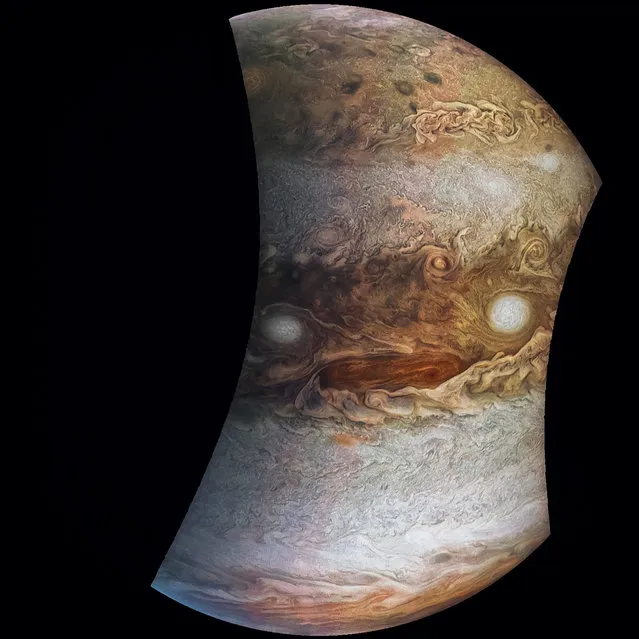
This NASA handout image released on June 30, 2017 shows an image acquired by JunoCam on NASA's Juno spacecraft on May 19, 2017 at 11:20 am PT (2:20 p.m. ET) from an altitude of 12,075 miles (19,433 kilometers). (Photo by AFP Photo/NASA)
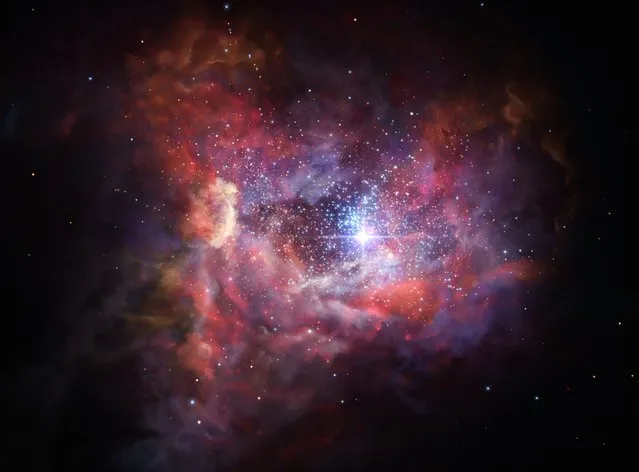
A handout photo made available by European Southern Observatory, ESO, on 08 March 2017, showing an artist's impression what the very distant young galaxy A2744_YD4 might look like. Observations using ALMA have shown that this galaxy, seen when the Universe was just 4 per cent of its current age, is rich in dust. Such dust was produced by an earlier generation of stars and these observations provide insights into the birth and explosive deaths of the very first stars in the Universe. (Photo by EPA)
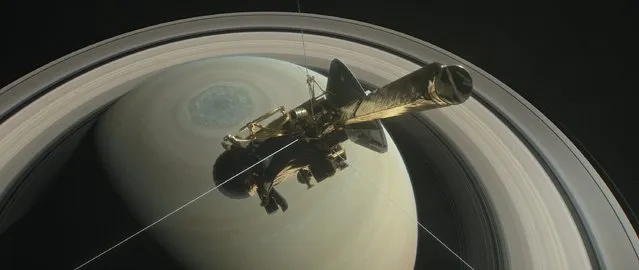
An undated handout photo made available by NASA shows an illustration of NASA's Cassini spacecraft above Saturn's northern hemisphere prior to one of its 22 grand finale dives, in Space. On 26 April 2017, the spacecraft will make the first in a series of 22 dives through the 2,400km gap between Saturn and its rings as part of its mission's grand finale. The spacecraft will then end its expedition on 15 September 2017, with a final plunge into the gas giant. The operation aims at gaining insights into the planet's structure and atmosphere as well as at capturing views of its inner rings. NASA's Cassini spacecraft is in orbit around Saturn since 2004. (Photo by EPA/NASA/JPL-Caltech)
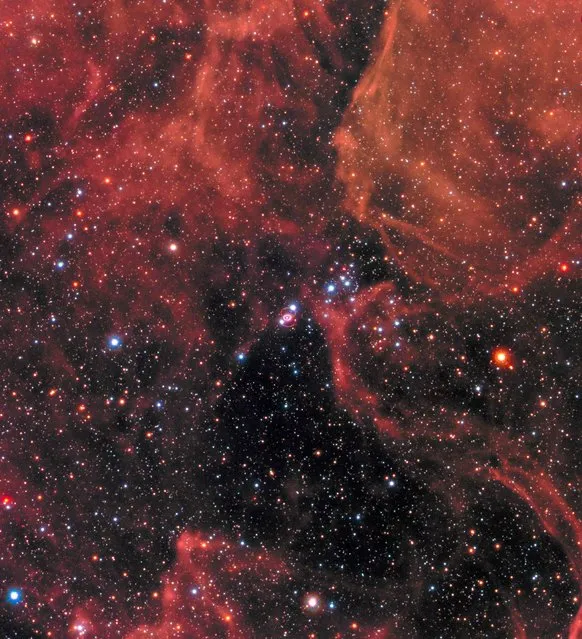
This handout picture released on February 24, 2017, by ESA/NASA shows the supernova remnant SN 1987A taken by the Hubble Space Telescope in January 2017. Since its launch in 1990 Hubble has observed the expanding dust cloud of SN 1987A several times and this way helped astronomers to create a better understanding of these cosmic explosions. Supernova SN 1987A is located in the centre of the image amidst a backdrop of stars. The bright ring around the central region of the exploded star is composed of material ejected by the star about 20 000 years before the actual explosion took place. The supernova is surrounded by gaseous clouds. The clouds red colour represents the glow of hydrogen gas. The colours of the foreground and background stars were added from observations taken by Hubbles Wide Field Planetary Camera 2 (WFPC2). (Photo by Robert Kirshner and Peter Challis/AFP Photo)
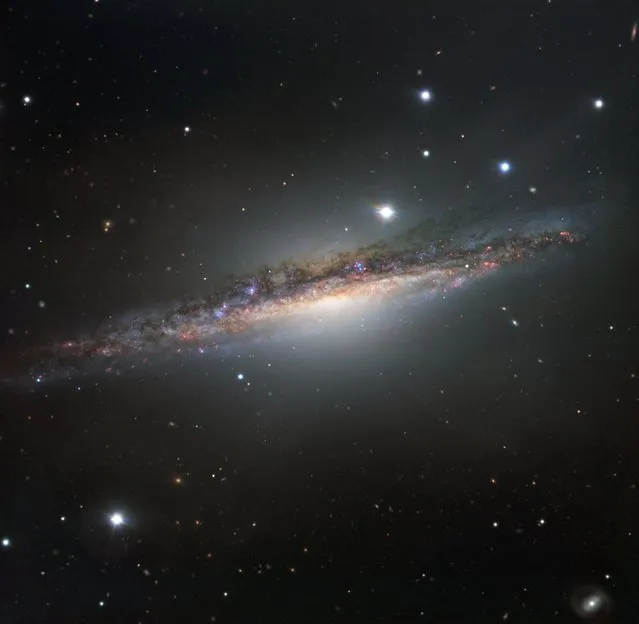
This handout image obtained on March 1, 2017 from the European Southern Observatory (ESO) shows NGC 1055 in the constellation of Cetus (The Sea Monster) as captured by ESOs Very Large Telescope. This large galaxy is thought to be up to 15 percent larger in diameter than the Milky Way. NGC 1055 appears to lack the whirling arms characteristic of a spiral, as it is seen edge-on. However, it displays odd twists in its structure that were probably caused by an interaction with a large neighbouring galaxy. (Photo by AFP Photo/European Southern Observatory)
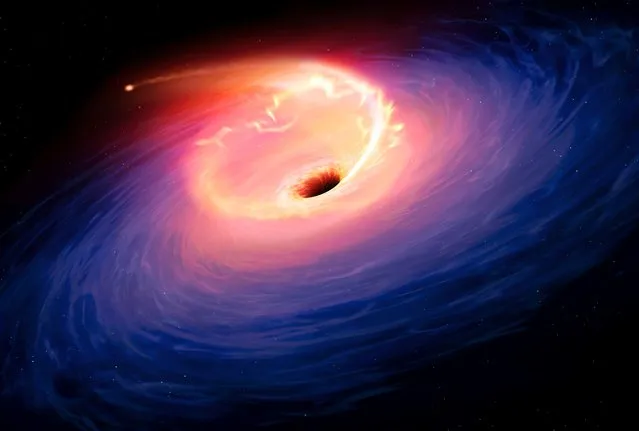
This file of a handout photo received on February 27, 2017 from Sheffield University shows an artists rendering of the tidal disruption event in F01004-2237, which is 1.7 billion light years from Earth. The release of gravitational energy as the debris of the star is accreted by the black hole leads to a flare in the optical light of the galaxy. From Europe to the South Pole, via Chile and Hawaii, eight telescopes have been simultaneously pointed at the center of our galaxy since April 7, 2017 to try and capture an image of a black hole, as part of a project called Event Horizon Telescope (EHT). (Photo by Mark A. Garlick/AFP Photo/Sheffield University)
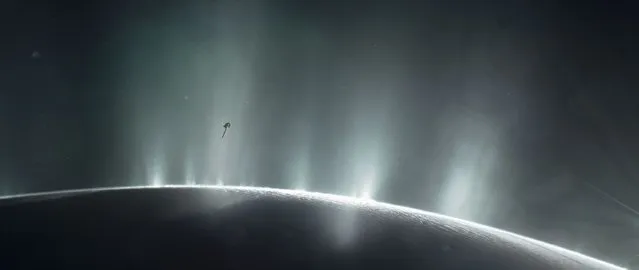
This handout illustration obtained April 13, 2017 courtesy of NASA, shows NASA's Cassini spacecraft diving through the plume of Saturn's moon Enceladus, in 2015. Two veteran NASA missions are providing new details about icy, ocean-bearing moons of Jupiter and Saturn, further heightening the scientific interest of these and other “ocean worlds” in our solar system and beyond. (Photo by AFP Photo/NASA)
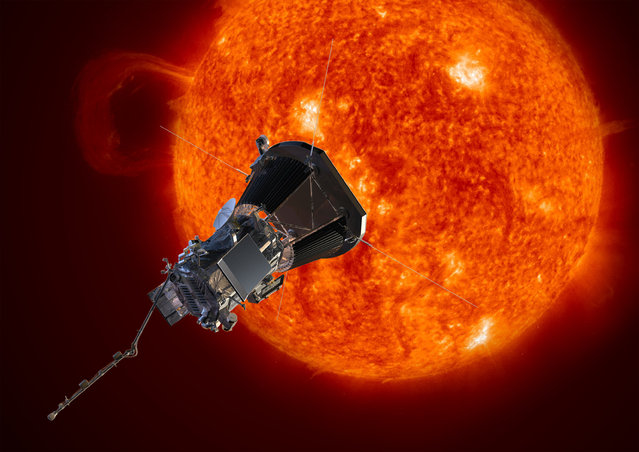
This image made available by the Johns Hopkins University Applied Physics Laboratory on Wednesday, May 31, 2017 depicts NASA's Solar Probe Plus spacecraft approaching the sun. On Wednesday, NASA announced it will launch the probe in summer 2018 to explore the solar atmosphere. It will be subjected to brutal heat and radiation like no other man-made structure before. (Photo by Johns Hopkins University Applied Physics Laboratory via AP Photo)
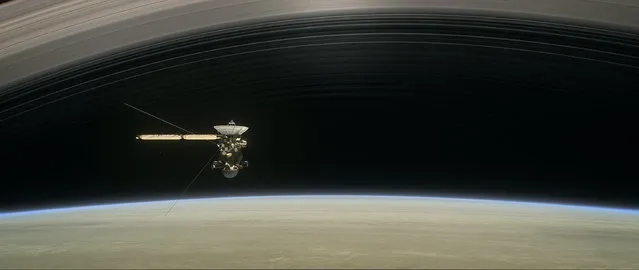
This image made available by NASA in April 2017 shows a still from the short film "Cassini's Grand Finale," with the spacecraft diving between Saturn and the planet's innermost ring. Launched in 1997, Cassini reached Saturn in 2004 and has been exploring it from orbit ever since. Cassini’s fuel tank is almost empty, so NASA has opted for a risky, but science-rich grand finale. (Photo by NASA/JPL-Caltech via AP Photo)
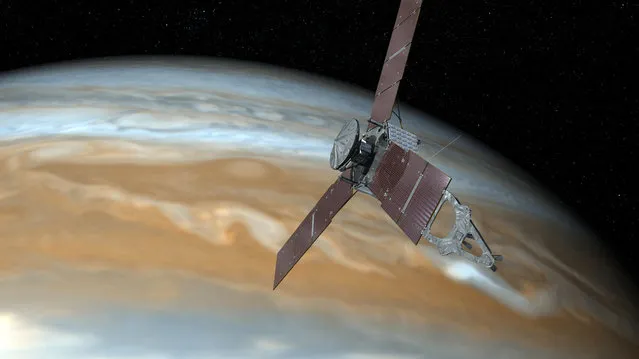
This undated image shows shows an artist's rendering of NASA's Juno spacecraft making a close pass over Jupiter. On Thursday, Feb. 23, 2017, NASA said its the spacecraft is stuck making long laps around the gas giant because of sticky valves. (Photo by NASA via AP Photo)
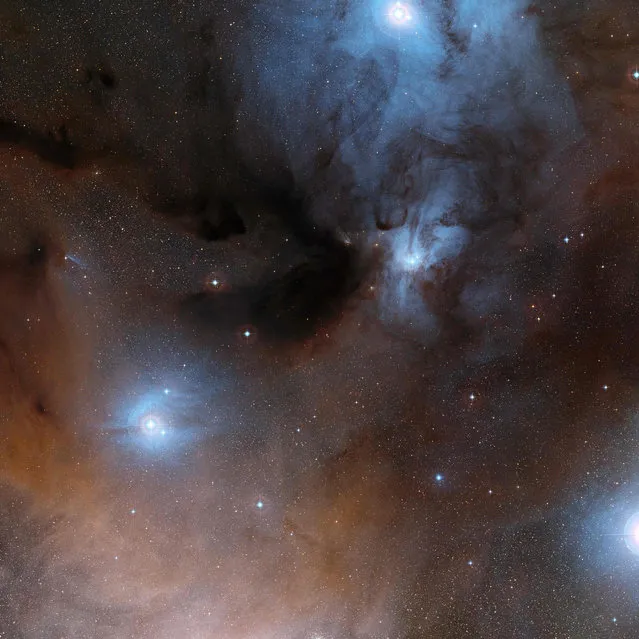
This handout picture released on June 8, 2017 by the European Southern Observatory shows a wide-field view of a spectacular region of dark and bright clouds, forming part of a region of star formation in the constellation of Ophiuchus (The Serpent Bearer). This picture was created from images in the Digitized Sky Survey 2. Two teams of astronomers said they have for the first time detected a key chemical building block of life swirling around infant stars that resemble our Sun before its planets formed. The molecule, methyl isocyanate, “plays an essential role in the formation of proteins, which are basic ingredients for life”, said Victor Rivilla, a scientist at the Astrophysics Observatory in Florence, Italy, and co-author of a study published in Monthly Notices of the Royal Astronomical Society. (Photo by AFP Photo/European Southern Observatory)
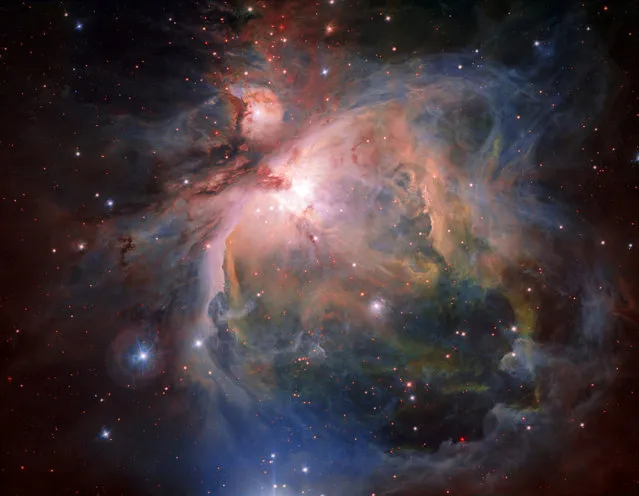
A handout photo made available by the European Southern Observatory (ESO) on 27 July 2017 shows the Orion Nebula and its associated cluster of young stars in great detail, captured by the OmegaCAM – the wide-field optical camera on ESO's VLT Survey Telescope (VST). This famous object, the birthplace of many massive stars, is one of the closest stellar nurseries, at a distance of about 1350 light-years. (Photo by G. Beccari/EPA/ESO)
08 Sep 2017 09:42:00,
post received
0 comments
